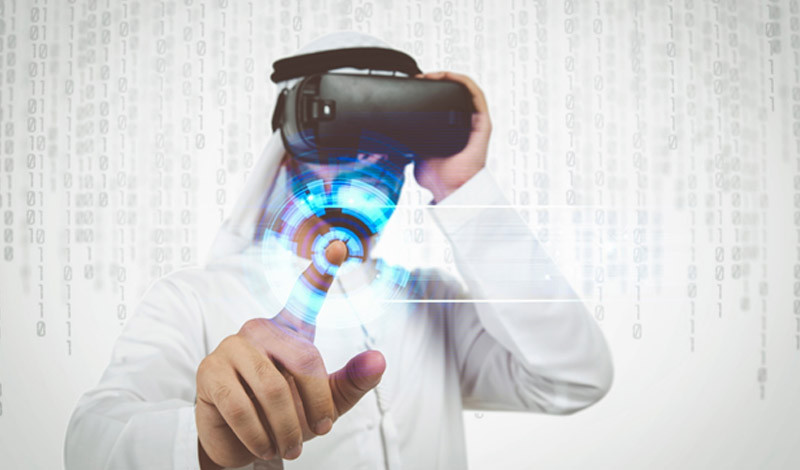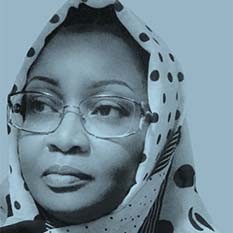Statistical indicators: the next technological revolution
It is expected that the statistical indicators used by the United Nations to classify countries, governments, and institutions will become an increasingly important tool with which to measure economic, political, social, and cultural perspectives on all levels: local, regional, national, and international. This predicts a statistical revolution that could sweep the world globally.

- by Dr. Sumaya Adam Eisa ,
- Monday, 27th March, 2017
Statistical indicators are a statistical measure of variation used to observe economic health from different points of view to reveal inflation or deflation, or to test the water and obtain a sense of what is going on in the economy.(1) These indicators give an overview for economists and administrators about the track of economic or administrative processes in general, and are already in use in the direct measurement of results in order to achieve development and economic objectives. They also give warning of the existence of potential problems in the same way as a car’s warning light.(2) The dependability on performance indicators has increased considerably and they have become a major part of strategic planning, where the balances and measures conform to translate the objectives to programs, policies, procedures, and activities. The use of statistical indicators also contributes to the drawing up of plans to show the way forward.(3) Many economists believe that statistical indicators will soon become a language for economics that will unify all economic processes. It is also expected that this could lead to the development of an indicator industry that would manufacture an independent warning, follow-up, and planning devices. Official offices could be established – whether in a firm, school, university, or hospital – where such devices could be available free of charge to measure performance, show disadvantages, and determine the way forward for improvement and development. Statistic indicators are expected to be the only actual guide for state policies in different aspects.(4). Information technology has been significant in the process of collecting and analyzing data. It has also eased the adoption of different statistical applications for directing decisions and the wide response to differences in what is known as statistical thinking.(5) The United Nations noted in the 2015 Human Resources Report that a massive amount of data which has already become available through technological transformation will be one of the features of the current technological revolution.(6) In fact, it can be said that the statistical revolution is already happening. Smart factories have the ability to use data in real time to provide highly consistent types of specialized products at competitive prices. Digital technologies provide companies with instantaneous and continuous access to information regarding the habits and interests of consumers (UN Human Resources Report 2015). Many companies find themselves drowning in data, while many professionals in such companies lack the ability to use the data to competitive advantage (7). Statistical thinking and methods are the key to unleashing the immense amount of information that exists in data (Data comprises the initial facts, or the raw material. This can be contained in images, numbers or a variety of other formats, as such information is the useful result obtained from analyzing and processing raw data.)(8) So, from this arises the importance of the application of statistical science. The United Nations adopts indicators with which to measure economic, social, and political development; to determine the disadvantages which need to be resolved; and to classify countries so as to ease the appropriate directing of investment.(9) According to the 2015 United Nation Human Resources Report, the 2030 Agenda for Sustainable Development consists of 17 goals, 169 objectives, and 230 indicators. These indicators cover the three dimensions relating to sustainable development: economic development, social integration, and environmental protection. They also cover many useful fields related to justice, peace, and good governance required to achieve sustainable development by 2030.(10) These indicators require countries to provide an immense amount of statistics which enumerate the steps they intend to take towards achieving the goals during the subsequent years.(11). The indicator of global competitiveness, published by the World Economic Forum, classifies 138 countries according to their competitiveness, providing the motive for different countries to commit to providing the required data, and to compete with each other fairly.(12) The indicator of global competitiveness depends on 114 elements, which are classified within 12 basic groups that include: institutions; infrastructures; total economy; environment; health; basic education, higher education and training; efficiency of the commodity market and efficiency of the labor market; development of the financial market; technological readiness; market size; business complexity; and innovation.(13). The digital economy paves the way to a comprehensive statistical revolution that will reclassify countries and institutions on a scientific basis, and will change many of the postulates.(14). Some experts consider that dividing countries into either developing economies or advanced economies, or into high-, medium- and low-waged income countries could become confusing. Such economists see that this categorization depends to some extent on “political, military, and ideological alliances”.(15) Prior to accession to the European Union, certain countries were classified as being developing countries – such as Poland, Slovenia, Slovakia, Hungary, Malta, and Cyprus. Following accession, they found themselves classified as developed countries. Also, using per capita gross domestic product as a criterion does not take into account “Distortions of official exchange rates and their non-representation of relative local purchasing power”.(16). In addition, “many countries during the last three decades were able to pass the development stage to the strong sustainable development like, South Korea, Hong Kong and Singapore” (17). Not only that, a country such as the United Arab Emirates (UAE), over a brief period of time, was able to occupy a prominent position on the different indicators of the United Nations (18). These indicators included human resources, transparency, competitiveness, quality of health care, global innovation, education, and electronic services.(19) The UAE is actively seeking to achieve better results. It was first in the world for road quality out of the 138 countries included in the World Economic Forum report, according to the Global Competitiveness Report 2016–2017.(20) It ranked 16th in the Global Competitiveness Report and 17th in its global Internet usage rate out of 205 countries, according to the latest data issued by the International Telecommunication Union.(21) Also, Dubai announced its plan to convert 25 per cent of its transportation network to self-driving cars by 2030. Furthermore, the UAE has established the world’s first council for the Fourth Industrial Revolution,(22) which means that it has not only achieved this stage of development, but is also competing for an advanced ranking, too. The government of the UAE will be the first government in the world to design and adopt a future framework so that a national agenda is in place in preparation for incorporation with the World Economic Forum. The framework concentrates on the readiness of governments over the next 10 years within six major axes: technology and innovation, the economy, society, natural and environmental resources, security, and governance, as mentioned by the Minister of Cabinet and Future Affairs, UAE (23). It is therefore expected that, independent, expanded technological indicators which would be developed on an analytical and experimental basis will form part of the statistical revolution that is to come, as the foundation for the reclassification of countries and institutions on a more fair and scientific basis. Competition has become global due to the Internet, which has created an inevitable need for companies to develop and improve more quickly. Clearly, the need to use statistical thinking to improve tangible business is now more urgent than ever. The impact of global competition on businesses and other institutions in our society forces them to rise to the occasion and develop to the best of their ability.(24). Hoerl and Snee (2002) mentioned in their book Statistical Thinking: Improving Business Performance that the global competition is the force that always drives innovation forwards. “The use of statistics in the pharmaceutical industry and in environmental studies increased when the United States enacted the Federal Food, Drug, and Cosmetic Act and established Environmental Protection. Global competition has posed a serious challenge to the US economy. The trade balance and average wages indicated a strong economy in the 1950s. However, the trade balance of goods and services became negative after 1971, and remained largely negative during the 1980s and 1990s. The average income per hour declined to a point where the income in the 1990s was equal to income in the 1960s, indicating deterioration in the standard of living of the country as a whole. Global competition has also affected the US economy in other respects. Companies found it difficult to compete, leading to large layoffs, downsizing, mergers, and bankruptcy. Many of the vision 500 companies in the 1960s are out of business today. General Electrics is the only surviving company from the original list in the Dow Jones industrial indicator in 1896. “The emergence of the Internet and e-commerce has increased the number of e-competitors, which has fundamentally changed traditional business systems. It is not enough just to work now; you have to develop a way to improve your work and to innovate in order to overtake the competition – now, you have to do two jobs. This second job requires you to perform the necessary statistical processes and follow your different indicators, so that you do not fall behind. Studies indicate that the time which we spend in work will definitely increase competitiveness”. (Hoerl and Snee 2002: 7, 8). Humanity is evolving. There have been industrial revolutions during the last 200 years. These affected the methods of manufacturing, transportation, communications, and communities. The First Industrial Revolution began with the invention of steam machines, the Second Industrial Revolution came about due to the discovery of electric power, and the invention of the computer and the Internet have led to the Third Industrial Revolution. We are now living through the Fourth Industrial Revolution, during which artificial intelligence and “big data” technologies, robotics, machine learning, nanotechnology, gene control, the application of three-dimensional printing in industry and production, and biotechnology have emerged(25) – the dimensions of this revolution are still unfolding.
The United Nations considered the data revolution to be an essential part of the post-2015 development agenda and the sustainable development goals. The term “big data” is a new term and one of the features of the current technological revolution, in the same way as cellphones, data integration, cloud computing, 3D printing, advanced robots, and energy storage using the maximum possible amount of solar and wind power, which provide electricity in remote areas and which also make the use of electric cars easier and available for everyone. A further feature of the new technological revolution are self-driving cars, jet vehicles, advanced oil and gas exploration technologies, biotechnology, and renewable energy technologies (United Nations Development Report 2015). The Information and Communication Technology Advisor stated in a report on the Al Jazeera network that self-driving cars will ignite a new fever, similar to the nineteenth-century gold fever, but this time it will evolve around data, which has started to become the currency of the digital society.(26) Self-driving cars are characterized by the availability of a huge amount of data collected by each car during its travel by means of the cameras and sensors with which the car is equipped. The digital economy, based on communication and information technologies, is sweeping the world at the speed of light. It has become one of the most important engines of innovation, competitiveness, and growth. There are still many opportunities for governments and companies.(27) Although a digital economy is based on the technological informatics revolution, and the communications revolution has swept the world, many human development goals will not be achieved unless the decision-makers can transform the vast amount of data generated into measurable and operational statistical plans.
The digital revolution, which is reshaping economic outcomes and employment, also has the ability to empower millions by providing new means and new jobs (28). These opportunities are expected to be provided by the statistical revolution. For many countries, it is important to put considerable reform in place, the most important of which is to change the current sterile teaching methods. This requires a large workforce. There is a lack of statistical graduates, as this science is not favored by students because its yield is weak, and neither its standing on the job ladder, nor the need for it, is clear.(29) The methodology of statistics itself needs to be developed in accordance with the tremendous technological development which the world is witnessing.(30). According to statisticians, there are tremendous opportunities for development and innovation within the vast amount of data awaiting conversion into the useful information that inspires decision-makers. Without analyzing the data, decision-makers cannot recognize the shortcomings that need to be developed; neither can new prospects be traced, nor developing countries rife with corruption benefit from the aid directed to them. Countries that cannot employ technologies and benefit from the statistical information revolution will never be attractive to investors, and thus will be overlooked. Achieving the sustainable human development goals set out by the United Nations requires a statistical revolution. A report by the Organization for Economic Co-operation and Development (OECD) entitled “Strengthening National Statistical Systems for Monitoring Global Goals” stressed the need for a “data revolution” in line with the report of the High Level Panel of Eminent Persons regarding the post-2015 Development Goals. The Panel’s vision is to build a framework that includes the production of more reliable and better data and statistics to help government keep track of the progress which they achieve and to ensure that it based on scientific evidence, and also to promote transparency.(31). “One-day, statistical thinking will be one of the most important requirements of a good citizen just like reading and writing”, said British author H. G. Wells, one of the founders of science fiction one hundred years ago.(32) Statistical science was limited to population censuses and the estimation of wealth and property to calculate taxes and collect the consequent state deductions (33). Its use also included collecting and organizing birth and death data to identify the available manpower in the country.(34)
Achieving scores on indicators should be the goal which every country seeks to achieve. Precise scientific classification now provides motivation. Departments, agencies, administrations, and statistical offices are expected to provide consultation to various developing countries that wish to catch up with globalization. Without statistical planning, there can be no effective development, since all aid and help will have been in vain. The statistical revolution will focus on statistical planning and helping countries to think statistically so they may benefit from the aid and expertise provided by the United Nations and donor countries to enable them to keep in step with the current global digital economy. The Partnership in Statistics for Development in the 21st Century (PARIS 21), a statistical partnership organization, was established for the purpose of development in the twenty-first century (35). It is a global partnership between developing and developed countries that enhances national statistical abilities, coordinates them, and uses them in the process of decision-making at regional, national, and international levels. Frameworks have already been put in place to achieve the global statistical partnership and to begin the coordination of a participatory debate regarding the necessary data and abilities worldwide to meet the challenge represented in monitoring the development framework post-2015.(36) The Busan Action Plan for Statistics also provides a useful framework through which national statistical capacities can be further developed. This Plan emphasizes the role of the National Strategies Organization, which brings data users together with producers to develop statistics (NSDSs). However, this organization will need new priorities and support with more financial investments.(37) The assistance provided by the United Nations and various aid organizations to developing countries over the years would have had greater influence if, first, the United Nations and aid organizations had focused on helping countries to think statistically. Thus, global statistical planning will help to avoid the waste of resources. An innovative international statistics mechanism is what will move the world in the future!

Dr. Sumaya Adam Eisa
Researcher, GLOBAL AFFAIRS DEPARTMENT (FORMER)
Read More
Areas of Expertise
- Writing
- Research
- Editing
- Translation
Education
- PhD, Fictional Genre Translaion
- M. A. in Translation & Interpretation, American University of Sharjah, UAE
- B. Sc. In Rural Economics, University of Khartoum, Sudan
Bio
Skilled writer dedicated to work to high standards with extreme commitment to meet deadlines and assure output accuracy. A dynamic experienced translator, translated for the FAO and other regional and international organizations. The Sole Author of Fisheries and Marine Science Dictionary, English-Arabic, the first of its kind in the Arab world. CEO and Founder of TBLT, Khartoum, the Translation Firm which translated the Legislation of the State of Qatar. Has great experience in the fields of scientific research, business and technical writing and translation. In addition to translation of hundreds of economic, administrative and scientific reports and studies. Volunteered in women and other non-governmental associations.

